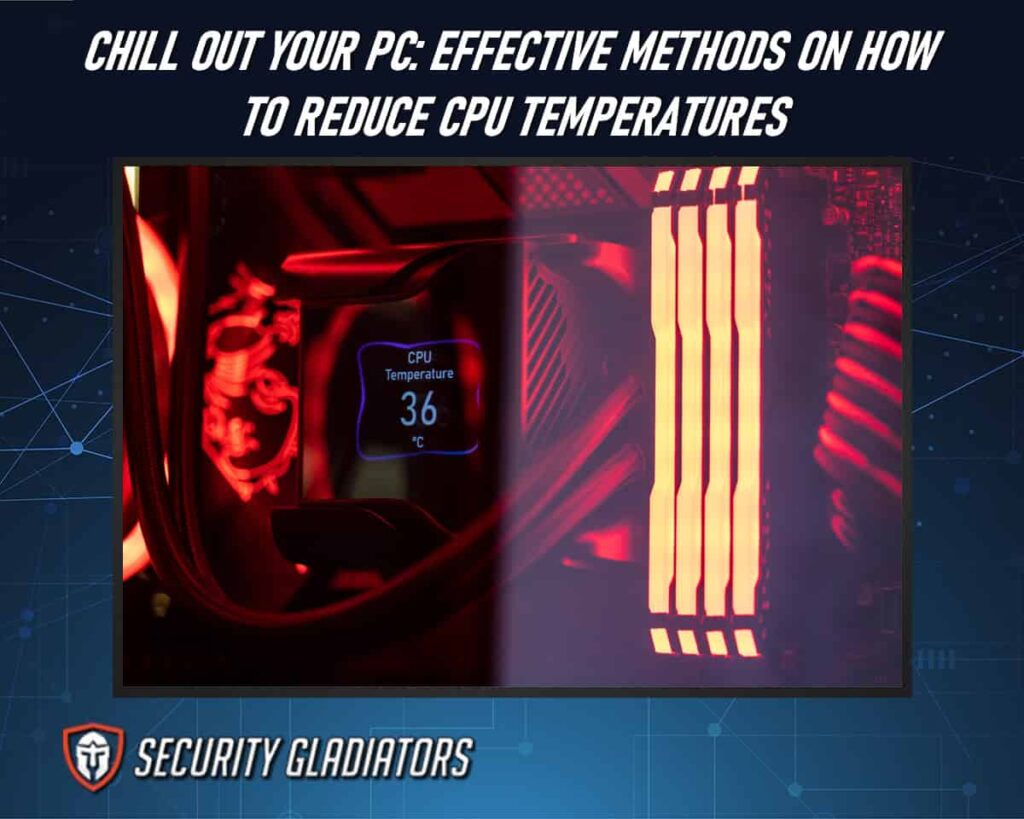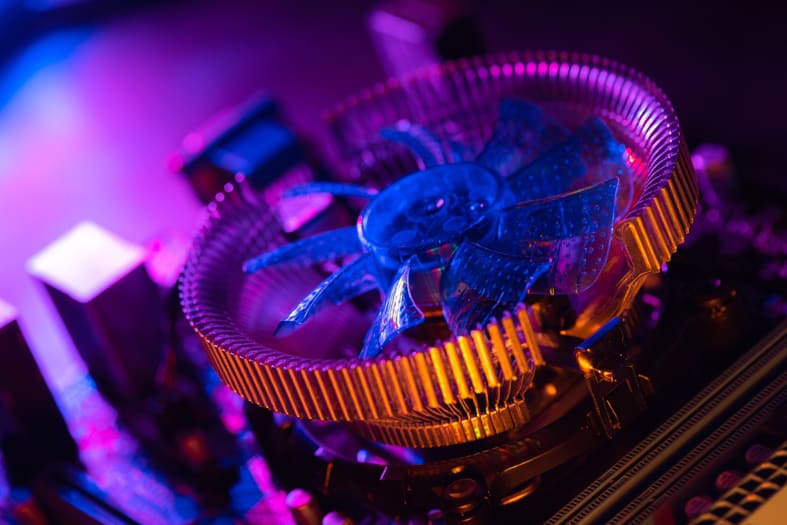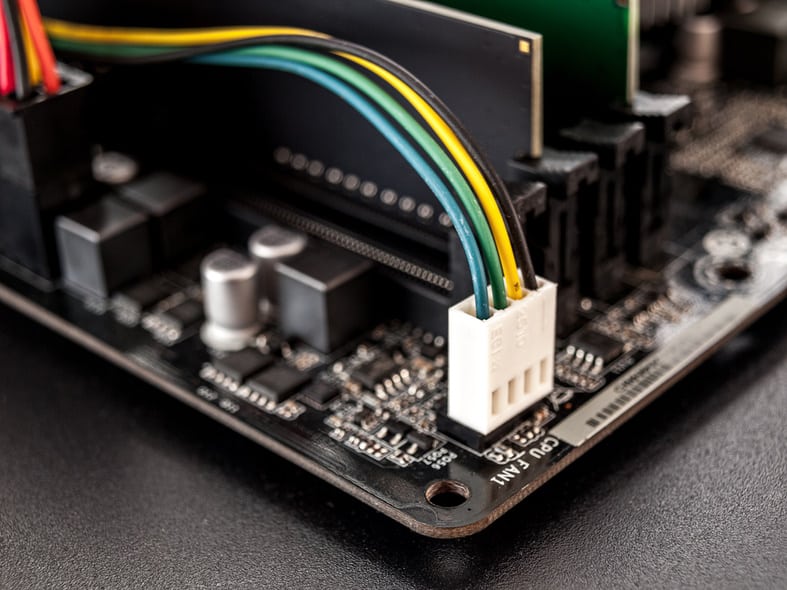
Table of Contents
Understanding CPU and Temperatures
The CPU, as the brain of your system, generates heat during operation, and maintaining appropriate temperatures is vital to prevent overheating and potential damage. To effectively monitor your CPU’s temperature, using the best CPU temperature monitor is essential. This tool enables you to keep a close eye on temperature fluctuations, ensuring that your processor remains within safe operating limits. Moreover, utilizing the best CPU fan control software allows you to regulate fan speeds, striking the right balance between cooling efficiency and noise levels. For enthusiasts aiming to push their CPU’s limits, the availability of the best overclocking software is a boost. This software empowers users to fine-tune their processor’s performance, albeit with a keen awareness of the temperature thresholds to prevent overheating. These tools collectively facilitate a holistic understanding of CPU behavior, aiding users in maintaining both stability and optimal thermal conditions.
What Are the Causes of CPU Overheating?
Several factors can contribute to high CPU temperatures in a computer:
Inadequate Cooling
If the cooling solution (such as CPU cooler or case fans) is insufficient or improperly installed, it can’t dissipate heat effectively, leading to elevated temperatures. Users can enable a smooth running of the fun by utilizing the best CPU fan control software to improve the performance of the processors while maintaining lower noise levels and optimal temperatures.
Dust and Dirt Buildup
Over time, dust and dirt accumulate on cooling components like fans and heat sinks, hindering airflow and reducing their cooling efficiency.
Overclocking
Overclocking a CPU can increase its performance but also generate more heat. Without adequate cooling, this can result in higher temperatures. With the best overclocking software, users can easily increase the speed of the processor and its overall performance.
Poor Thermal Paste Application
Thermal paste helps improve the heat transfer between the CPU and its cooler. Incorrect application or an old, dried-out thermal paste layer can cause poor heat dissipation.
Background Processes
Resource-intensive applications, malware, or unwanted background processes can stress the CPU, causing it to generate more heat.
Insufficient Case Ventilation
A poorly ventilated case or blocked air intake/exhaust points can lead to heat buildup inside the case, affecting overall component temperatures.
Ambient Temperature
The environment in which the PC is located matters. A hot room will make it harder for cooling solutions to keep temperatures low.
Hardware Intensive Tasks
Running tasks that heavily utilize the CPU, such as video rendering or gaming, can elevate temperatures.
Old Hardware
Aging hardware might not perform as efficiently as it did when new, leading to higher power consumption and heat generation.
Inadequate Power Supply
A power supply unit (PSU) that can’t deliver enough power to the components might lead to excessive heat generation.
How To Reduce CPU Temperatures
Here are the tips you can use to lower CPU temperature:
1. Upgrade CPU Cooler
Upgrading the CPU cooler is an effective method to reduce CPU temperatures and improve overall cooling performance.
There are several options available for CPU cooler upgrade:
High-Performance Air Coolers
These coolers feature larger heatsinks and more efficient fans, allowing for better heat dissipation and lower CPU temperatures.
Liquid Cooling Systems
Liquid coolers use liquid coolant to transfer heat away from the CPU, providing superior CPU cooling performance compared to air coolers.
All-In-One (AIO) Coolers
AIO coolers combine elements of both air and liquid cooling, offering a convenient solution with improved cooling capabilities.
Custom Water Cooling Loops
This advanced option involves creating a custom water cooling loop using separate components like pumps, reservoirs, radiators, and water blocks for optimal heat dissipation.
Note:
By upgrading the CPU cooler with one of these options, users can effectively reduce their CPU temperatures and ensure that their computer operates at an optimal temperature range for improved performance and longevity.2. Use Laptop Cooling Pad
Using a laptop cooling pad can significantly improve the thermal management of a computer system, resulting in enhanced performance and longevity. Laptop users often face the challenge of high CPU temperatures due to limited space for airflow and insufficient cooling mechanisms. However, by using a laptop cooler, these issues can be effectively addressed.
The cooling pad is designed to provide additional cooling by circulating cool air around the laptop’s base and dissipating heat more efficiently. It creates a barrier between the laptop and any surface it sits on, allowing fresh air to flow underneath and prevent heat buildup. This not only helps lower CPU temps but also prevents potential damage caused by overheating. By incorporating a laptop cooling pad into their setup, users can ensure that their laptops operate at optimal temperatures, allowing for smoother multitasking, improved overall performance, and increased lifespan of their computer system.
3. Replace CPU Thermal Paste
Replacing the CPU thermal paste can contribute to better heat dissipation and improve overall cooling efficiency in computer systems. The thermal paste, also known as thermal compound or grease, is a material that fills the microscopic gaps between the CPU and the heat sink. Over time, this paste can deteriorate or become less efficient, resulting in poor heat transfer and increased CPU temperatures.
By replacing the old thermal paste with a new one, several benefits can be achieved:
Enhanced Heat Transfer
A fresh layer of thermal paste ensures optimal contact between the CPU and heat sink, allowing for efficient heat transfer from the processor to the cooling system.
Reduced CPU Temperatures
Improved heat transfer leads to lower CPU temperatures during operation. This is especially important for high-performance systems that generate significant amounts of heat.
Prevention of Thermal Throttling
When a CPU reaches certain temperature thresholds, it may activate thermal throttling as a protective measure. This reduces its performance to prevent overheating but can negatively impact system performance. Replacing the thermal paste helps avoid excessive temperature buildup and subsequent throttling.
4. Remove Dust Buildup
Over time, dust can accumulate inside the computer case, especially in areas with poor ventilation or where air is drawn in for cooling purposes. This dust buildup can restrict airflow, leading to increased temperatures and potential damage to components. It is recommended to regularly clean the computer system using compressed air or a vacuum cleaner specifically designed for electronic devices. However, caution must be exercised when cleaning sensitive components such as the motherboard or GPU. It is also advisable to use dust filters on intake fans and ensure proper ventilation within the computer case to minimize dust accumulation. By implementing these measures, one can effectively promote better overall system performance.
5. Improve PC Case Airflow
By improving the PC case airflow, you can effectively reduce CPU temperatures and ensure that your computer operates at its optimal level. There are two fundamental airflow configurations known as Positive Pressure and Negative Pressure. In a Positive Pressure setup, there’s an intake of air that exceeds the amount being expelled. Conversely, a Negative Pressure system operates in the opposite manner, where the air being drawn in is less than what is being pushed out.
Here are four ways to improve PC case airflow:
Clean the CPU Fan
Dust buildup on the CPU fan can hinder its performance and lead to increased temperatures. Regularly cleaning the fan using compressed air or a soft brush can help remove dust particles and improve airflow.

Proper Cable Management
Poor cable management can obstruct the path of airflow within the PC case, resulting in higher temperatures. Organizing cables neatly and securing them away from obstructive areas allows for better airflow and cooler components.
Install Additional Case Fans
Adding more case fans strategically around the PC case can significantly enhance airflow. This helps in expelling hot air from inside the case while simultaneously drawing in cool air from outside, ensuring better heat dissipation.
Use Dust Filters
Placing dust filters over intake fans prevents excessive dust accumulation inside the PC case. This not only improves overall cleanliness but also aids in maintaining unobstructed airflow, leading to lower CPU temperatures.
Note:
By implementing these measures to improve PC case airflow, you can effectively reduce CPU temperatures, prolong your computer’s lifespan, and optimize its performance.6. Improve Cable Management
Properly organizing and routing cables not only reduces clutter but also prevents them from obstructing the intake or exhaust fans, which can impede the airflow inside the case. When cables are haphazardly placed or tangled together, they can restrict the movement of cool air and trap heat around sensitive components such as the CPU. By improving cable management, users can reduce the chances of hotspots forming within their PC case and ensure that cool air reaches all necessary components effectively. Moreover, organized cables also make it easier to access and maintain various parts of the computer, aiding in regular cleaning and preventing dust buildup that could further hinder cooling performance.

7. Lap CPU Heatspreader
Lapping involves the process of smoothing out any imperfections on the surface of the heat spreader, which can improve heat transfer between the CPU and the cooler. By using fine-grit sandpaper or a lapping kit, you can carefully remove any unevenness or scratches on the heat spreader, allowing for better contact with the CPU cooler. This results in improved thermal conductivity and lower temperatures for your CPU. When undertaking this procedure, it is crucial to exercise caution and follow manufacturer guidelines to avoid damaging your processor.
To help you understand why lapping can be advantageous in reducing CPU temperatures, here are three key benefits:
Enhanced Heat Transfer
By creating a smoother surface on the heat spreader, lapping maximizes contact between the CPU and cooler. This ensures efficient heat dissipation from the processor to prevent overheating.
Reduced Thermal Resistance
The removal of imperfections eliminates air gaps or irregularities that impede heat flow. With a more even surface, there will be less resistance to thermal energy transfer.
Improved Cooling Performance
Lapped CPUs experience improved cooling performance as heat output is efficiently transferred from the processor to the cooler through direct contact facilitated by a smooth heat spreader surface.
This is important:
After lapping your CPU’s heat spreader, it is essential to reapply the thermal paste before reinstalling your cooler. This layer helps fill microscopic gaps between surfaces and promotes optimal heat conduction from your processor to its cooling solution. Remember that proper care should be exercised during this process as excessive sanding or mishandling can permanently damage your hardware components; therefore, following manufacturer recommendations is paramount for success while lap cooling your PC setup effectively.8. Delid CPU
Delidding the CPU, a process that involves removing the integrated heat spreader (IHS) from the processor, can significantly impact temperature reduction in computer systems. Delidding is considered one of the most effective methods to reduce CPU temperatures and ‘chill out’ your PC. By removing the IHS, which is responsible for transferring heat from the CPU die to the cooler, users can directly apply thermal paste or liquid metal onto the die itself, improving heat dissipation.
This method allows for better thermal conductivity and more efficient cooling, resulting in lower temperatures during intensive tasks such as gaming or video editing. However, it should be noted that delidding carries some risks as it requires careful handling to avoid damaging delicate components.
Note:
Additionally, warranty-voiding may occur if not done correctly. Therefore, before attempting this method, it is essential to thoroughly research proper techniques and consider potential drawbacks.Consequences of CPU Overheating
CPU overheating can have serious consequences that can impact both short-term and long-term performance and the overall health of your computer system:
Reduced Performance
When a CPU overheats, it often triggers thermal throttling, a protective mechanism that lowers the CPU’s clock speed to reduce heat generation. This results in decreased performance, slower application load times, and reduced overall responsiveness.
System Instability
Overheating can lead to system crashes, freezes, and unexpected shutdowns. High temperatures can cause the CPU to become unstable, leading to errors and malfunctions in applications and the operating system.
Component Damage
Prolonged exposure to high temperatures can damage not only the CPU but also other sensitive components like the motherboard, RAM, and even storage drives. Over time, this can lead to hardware failures and data loss.
Shortened Lifespan
Excessive heat is one of the primary factors that can shorten the lifespan of computer components. High temperatures can accelerate the wear and tear on internal components, leading to premature failure.
Thermal Stress
Rapid temperature changes due to overheating and subsequent cooling can cause thermal stress on the CPU and other components. This expansion and contraction can lead to micro-cracks in solder joints, which can impair the functionality of the CPU.
Permanent Damage
In extreme cases, prolonged overheating can cause permanent damage to the CPU, resulting in irreparable malfunctions that require replacement.
Data Corruption
Overheating can affect the stability of the entire system, potentially leading to data corruption or loss if the system crashes during critical operations or while writing data to storage devices.
Warranty Voiding
Some manufacturers consider overheating due to overclocking or inadequate cooling as misuse, which may void your warranty coverage.
Financial Implications
Dealing with the consequences of CPU overheating can be expensive, requiring repairs, replacements, or upgrades, which can strain your budget.
Time and Productivity Loss
Dealing with system crashes and troubleshooting overheating issues takes time away from productive tasks and can lead to frustration.
Frequently Asked Questions
How Often Should I Replace the CPU Thermal Paste?
The frequency of replacing CPU thermal paste depends on various factors such as the type of paste used, environmental conditions, and usage patterns. It is generally recommended to replace it every 1-2 years to ensure optimal heat transfer and prevent overheating issues.
Can Using a Laptop Cooling Pad Damage My Laptop?
Using a laptop cooling pad does not inherently damage laptops. However, improper use or low-quality cooling pads may cause issues such as reduced airflow, increased dust accumulation, or uneven pressure distribution on the laptop’s surface.
What Is the Best CPU Fan Control Software?
There are several reputable CPU fan control software options available, such as SpeedFan, MSI Afterburner, and HWiNFO. These tools allow you to customize fan curves, adjusting fan speeds based on CPU temperatures. Be cautious when using these programs and ensure you don’t set fan speeds too low, as it might lead to inadequate cooling.
When Should I Be Concerned About My CPU Temperatures?
While safe operating temperatures vary by CPU model, generally, temperatures exceeding 85-90°C under load are a cause for concern. Consistently running at high temperatures can impact your CPU’s lifespan and performance. Monitoring software can help you keep an eye on temperatures and take action if they become too high.
Conclusion
Higher CPU temperatures can be detrimental to the overall performance and lifespan of a computer. It is important to identify the causes of high CPU temperature and take necessary steps to reduce it. By implementing effective methods to lower your CPU temperature, you can significantly reduce CPU temperatures and enhance overall system stability. Regular monitoring and proactive temperature management will not only prevent potential hardware damage but also provide a smoother and more enjoyable computing experience. Remember that each system is unique, so it’s essential to tailor these methods to your specific hardware and usage patterns for the best results.

